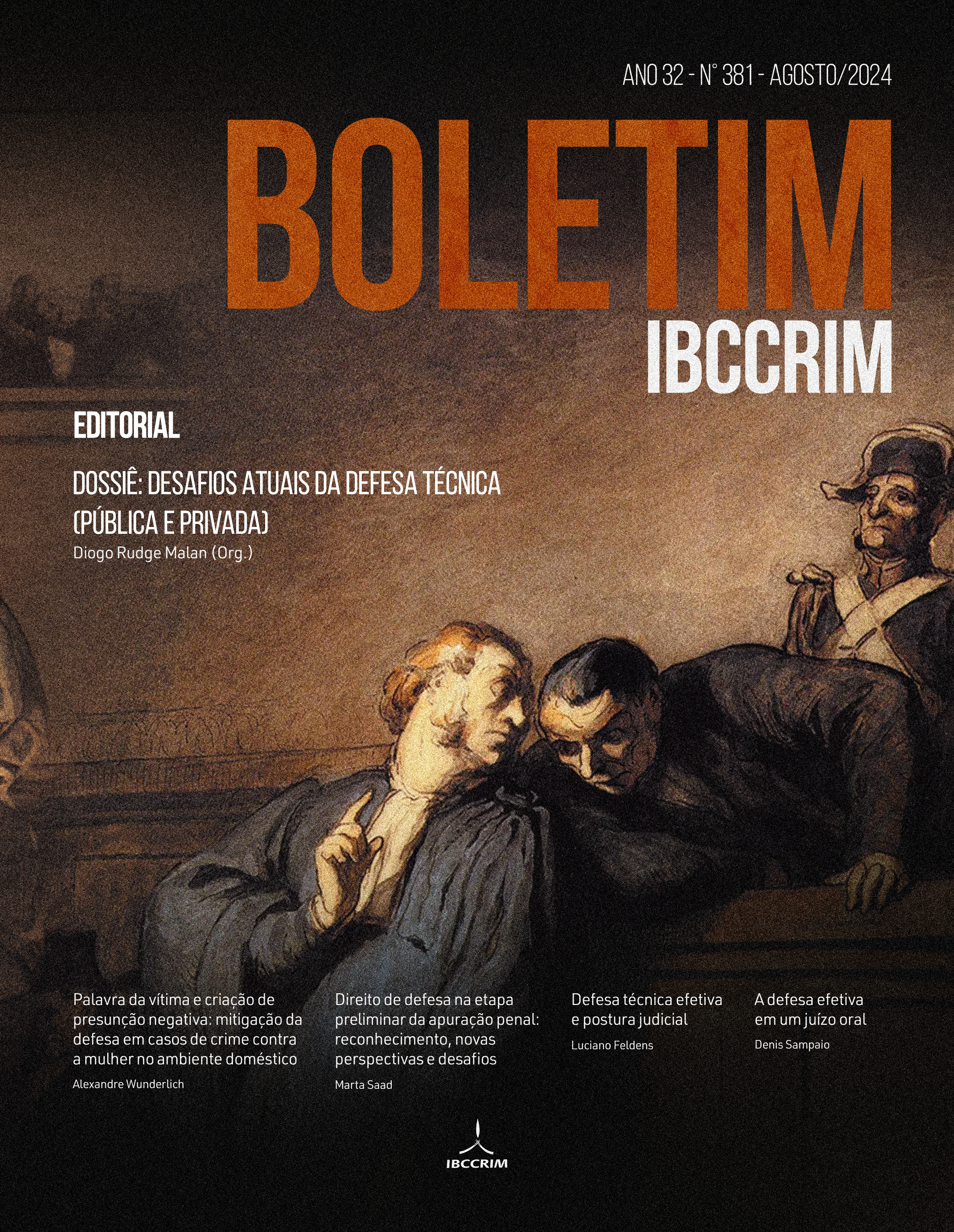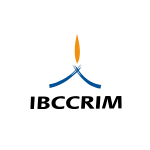Criminal defense investigation and the Public Defender´s office
an institutional contribution to equality of arms
Views: 213DOI:
https://doi.org/10.5281/zenodo.12710046Keywords:
Defense evidence, Public Defender’s Office, Legal aidAbstract
The purpose of this brief essay is to contextualize the institutional role of the Brazilian Public Defender's Office in consolidating direct criminal investigation by the defense.
Downloads
Publication Facts
Reviewer profiles N/A
Author statements
- Academic society
- Instituto Brasileiro de Ciências Criminais
- Publisher
- IBCCRIM
References
BENTHAM, Jérémie. De l’organisation judiciare, et de la codification. Paris: Librairie de Hector Bossange, 1828.
BINDER, Alberto; CAPE, Ed; NAMORADZE, Zaza. Defesa criminal efetiva na América Latina: resumo executivo e recomendações. São Paulo: ADC, 2016.
CEARÁ. Instrução Normativa n° 136/2023. Cria a Central de Investigação Defensiva da Defensoria Pública do Estado do Ceará (CIDEF). Fortaleza: DPECE, 2023. Disponível em: https://www.defensoria.ce.def.br/wp-content/uploads/2023/06/Instru%C3%A7%C3%A3o-Normativa-136-2023-Investiga%C3%A7%C3%A3o-defensiva-republica%C3%A7%C3%A3o-ok1.pdf. Acesso em: 4 jul. 2024.
FERRAJOLI, Luigi. Direito e razão. São Paulo: RT, 2006.
FILANGIERI, Gaetano. La scienza della legislazione. v. 3. Florença: Sucessori le Monnier, 1872.
GIANELLA, Berenice Maria. Assistência jurídica no processo penal. São Paulo: Revista dos Tribunais, 2002.
RIO DE JANEIRO (Estado). Defensoria Pública Geral do Estado. RESOLUÇÃO DPGERJ N° 1179 DE 29 DE SETEMBRO DE 2022. Rio de Janeiro: DPGERJ, 2022. Disponível em: https://defensoria.rj.def.br/legislacao/detalhes/20545-RESOLUCAO-DPGERJ-N-1179-DE-29-DE-SETEMBRO-DE-2022. Acesso em: 4 jul. 2024.
VARGAS, Nicolás Omar. La producción de prueba de descargo por parte de la defensa en el proceso penal en Argentina durante la etapa de instrucción o investigación. Un análisis comparativo entre procesos inquisitivos y acusatorios. Revista Brasileira de Direito Processual Penal, Porto Alegre, v. 6, n. 1, p. 329-360, jan./abr. 2020. https://doi.org/10.22197/rbdpp.v6i1.328
Downloads
Published
How to Cite
Issue
Section
License
Copyright of published articles belongs to the author, but with journal rights over the first publication and respecting the one-year exclusivity period. Authors may only use the same results in other publications by clearly indicating this journal as the medium of the original publication. If there is no such indication, it will be considered a situation of self-plagiarism.
Therefore, the reproduction, total or partial, of the articles published here is subject to the express mention of the origin of its publication in this journal, citing the volume and number of this publication. For legal purposes, the source of the original publication must be consigned, in addition to the DOI link for cross-reference (if any).


 Português (Brasil)
Português (Brasil)
 English
English
 Español (España)
Español (España)










